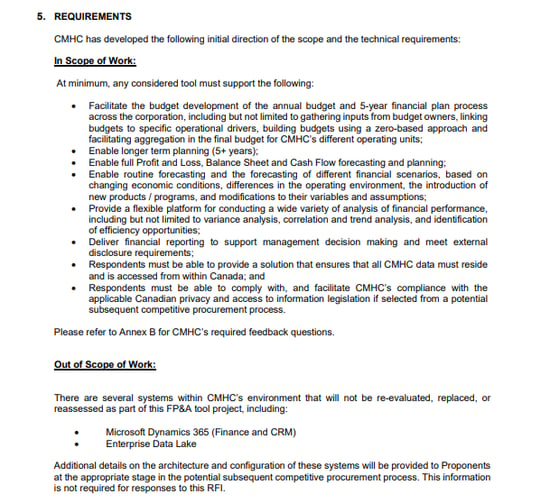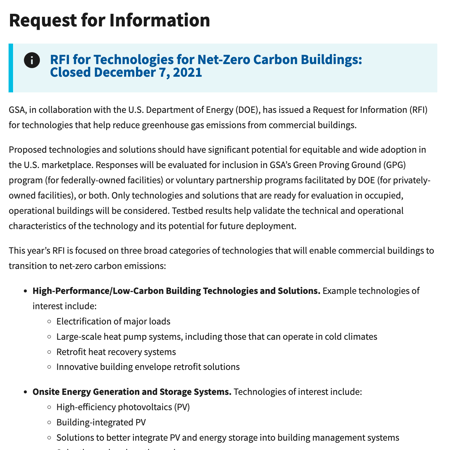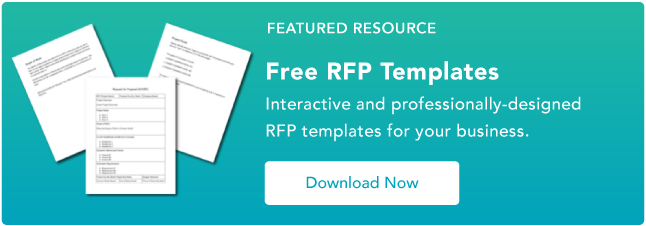RFIs: The Simple Guide to Writing a Request for Information
Large corporations and government agencies don’t shop around for the best contractors and freelancers the same way a SaaS company or a small business might.
Rather than relying on word of mouth, a quick Google search, or a Facebook ad, these organizations follow a procurement process that ensures fair business practices and quality results.
As a preliminary step in the procurement process, an RFI gives a company or organization the information it needs to move forward with an RFP and RFQ. But what exactly is an RFI and what does this acronym stand for?
RFIs are important because they reduce blind spots and empower your team to make better decisions. With more information at your disposal, you can understand the marketplace and get a better sense of the questions you’ll need to ask as you move forward in the procurement process.
How does an RFI work?
Step 1: The buyer develops the RFI.
RFIs are written documents with the goal of collecting information from sellers. This information can be used to help buyers make a purchasing decision. The questions that are included in an RFI are specific and straightforward so that the sellers understand what the buyer is asking for.
Sellers can find an RFI on the company’s website, in databases like Procore, and government web pages like grants.gov.
Step 2: Sellers draft responses to the RFI.
Once a seller finds an RFI, they have a window of time specified by the buyer in which to complete it.
The information that is collected in the RFI is organized in such a way that it can be compared and contrasted against the information that other sellers submit.
Step 3: The buyer reviews all the sellers’ responses.
After the deadline for RFIs closes, the buyer reviews all of the responses submitted by the sellers. In this step, the buyer is looking for information about the companies, the products or services they offer, its history and background, and other factors that can impact how well the seller can deliver on the project.
Note: Price, budget, timeline, and other specific information aren’t covered in an RFI since it’s a part of step one in the overall procurement process.
Step 4: The buyer moves onto the next stage in the procurement process — the RFP.
After the buyer has determined which of the RFI submissions meets the preliminary qualifications for the project, they’ll move on to the next step in the process which is an RFP (Request for Proposal).
An RFI is the initial step a company takes to solicit information from potential sellers, as described above. Its main objective is to obtain information, not to make a final decision. Once the RFIs are submitted, the company will review them and shortlist the best options, armed with more insight. Then, they’ll send an RFP to that short list of sellers that satisfied the requirements of the RFI.
A Request for Proposal is a formal request for the selected vendors or sellers to respond to a specific contract opportunity. The document specifies the scope and price so potential sellers can put together a bid for the work.
These bids are then compared to understand each seller‘s strengths and weaknesses, and the best fit is chosen. RFPs are a decision document, so the questions are more targeted and specific.
After an RFP, the company may be contacted with an RFQ or Request for Quote that breaks down the project even further into specific cost structures and deliverables.
Request for Information Template
And RFI is similar to an RFP, but with less detail. Download the template below and use the short, one-page version of the request for proposal to draft your RFI. Once you’ve downloaded your free copy, follow along with the steps below to learn how to write an RFI.
%20Template,%20Blog%20Image.jpg?width=350&name=Request%20for%20Project%20Proposal%20(RPT)%20Template,%20Blog%20Image.jpg)
How to Write an RFI
Creating your first RFI can be overwhelming. What should you ask for? What information does the seller need to know? To help answer those questions, use this simple guide to get the most out of the RFI process.
1. Draft an overview or statement of need.
Outline your goals and objectives, along with some general information about your company. This section should be short and provide an overview of your project to someone with no background information.
2. Add context about your organization.
Including additional information about your organization can help the seller tailor their response to your needs. You may want to mention which department is leading the project, who your customers are, and what your company values are, among other things.
3. Finalize the details.
What problem are you looking to solve? What information do you need? Here’s where you can detail what you’re looking for. Include any additional information a seller might need to know to develop a thorough RFI response. That may include:
- Any necessary skills and credentials the respondent may need to be successful
- Timelines or general scope
- What you’re not looking for
4. Mention information about the process.
Explain how interested parties should respond to the RFI. Attach a response template if you have one, outline any deadlines, and note if and when you’ll reply to respondents after the RFIs have been gathered. You may want to mention any evaluation criteria you’ll use when creating the shortlist for RFPs.
Best Practices for RFI Documentation
The more thoughtful you are about your RFI document, the better quality responses you will get back. Instead of casually emailing a sales rep and asking for information, creating RFI documentation will ensure that you get exactly the information you need. In that document, be sure to:
- Clearly state the information you’re requesting.
- Be specific about how and when you want to receive seller responses.
- Keep an open mind so that sellers can provide additional information that they think is relevant.
- Be brief and respectful of the sellers’ time.
RFI Examples
Need more inspiration? Read through the following examples of RFIs for more ideas on what to include in yours. These three RFIs all come from different industries and have different needs, so they are a good overview of the options available to you.
1. U.S. General Services Administration
In 2021, the U.S. General Services Administration collaborated with the U.S. Department of Energy to issue an RFI supporting a project to reduce commercial building greenhouse gas emissions. The overall goal that the GSA and DOE were aiming to reach was net-zero carbon emissions within these buildings and the RFI focused on three specific areas that would allow this goal to be achieved. Sellers who had technology to meet the requirements of this RFI were required to propose measurable success criteria across several categories.
In addition to the RFI requirements on the webpage, the GSA and DOE hosted a webinar, provided an FAQ, and made the presentation slides from the webinar available on the webpage so that all sellers had access to the information they’d need to submit the best response.
What makes this RFI example stand out is that it’s kept up to date frequently. New information is added frequently. When the deadline is passed, that is notated clearly at the top of the RFI so sellers can move on to other requests that are accepting submissions. This is a great example of the best practice we mentioned earlier about respecting the sellers’ time when asking for RFI submissions.
2. NASA
When NASA retires parts of their space shuttles, they like to display them at museums or other educational institutions. To gauge interest and understand the potential options for an upcoming retired part, they opened up an RFI. Here’s a sample of the document:
“This RFI is being used to gather market research for NASA to make decisions regarding development of strategies for placement of Space Shuttle Orbiters and Space Shuttle Main Engines (SSMEs) for public display after conclusion of the SSP. NASA is seeking information from educational institutions, science museums, and other appropriate organizations about the community’s ability to acquire and display a Space Shuttle Orbiter after the vehicles are retired from flight status.”
We like this RFI example because it provides a straightforward overview of the purpose of the RFI, and outlines what NASA wants to learn from the process.
3. Government of Canada
Government websites are a great place to find RFI examples because they are required to make all procurement processes publicly available. The following example is from an RFI for financial planning software.

The requirements section of this RFI is a great example of how to explain what you do and don’t need in the responses. While the government of Canada is looking for financial planning software, they will be keeping their CRM and data lake provider.
4. University of Ottawa
In the following RFI except, the University of Ottawa is looking for an ERP integration solution. What’s unique about this RFI is how they want to receive responses. Rather than collecting written responses or documents, the U of O is scheduling strategy discussions with suppliers. This is a unique way to gather information, but helpful when you don’t have enough knowledge in the area to put together a scope of work yet.
“The University of Ottawa (University) is issuing this Request for Information (RFI) to schedule strategy discussions (via a conference call) from interested Suppliers with experience in ERP Integrations.
The intent of these discussions is to obtain feedback from Suppliers to assist the University in developing a more accurate Scope of Work and overall approach for an upcoming Request For Proposal (RFP) for ERP Integration solutions.”
Request for Success
Every RFI will be unique to your organization and the information you require. Use the template above as a guide to creating an RFI that will save you time in evaluating potential solutions.
With the right information being sent your way, all you need to do is read up! You’ll be well on your way to procuring the best solution for your team’s needs.
Editor’s note: This post was originally published in April 2021 and has been updated for comprehensiveness.
![]()


